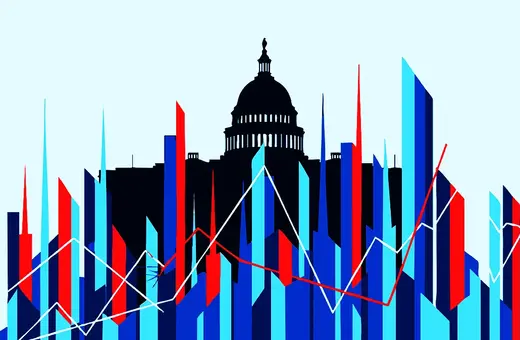Inflation is up the world over and Central Banks are doing the one thing they can do to combat it: they’re raising interest rates. But as recently demonstrated in the U.K., government budgets can sabotage the work Central Banks try to do: increases in government spending can further fuel inflation. It’s time to question the strict separation of the monetary policy of central banks from the fiscal policy of governments and advocate for closer coordination between the two, argues Charles Goodhart.
Ever since the adoption of central bank independence in the early 1990s, the operations of monetary and fiscal policies have been formally separated: governments were responsible for the latter and central banks for the former. Recent developments suggest that this strict separation needs reconsideration. The main function of central banks, that of controlling the level of inflation, may well prove impossible so long as government fiscal policy remains as expansionary as it has been in past years.
When setting the instrument(s) of monetary policy, the relevant Monetary Policy Committee of each country’s central bank, and especially its Chair, has to take fiscal policy as given by each government and is not supposed to express any criticism of such policy, at least not in public. Furthermore, the models used by most central banks to predict inflation and growth in the economy, generally incorporate the divergence of expenditure and output from their equilibrium level, at which there would be no pressure for inflation to diverge further from target, a measure known as the output gap, and the expectations of firms and households about the future general level of inflation.
___
This formal separation between governments and central banks worked really quite well until recently.
___
Thus, in the discussion in Central Banking, between one of its staff, Daniel Hinge, and eminent American economist Christopher Sims, ‘On modelling the inflation surge’ (26 October, 2022), the following exchange took place:
“Hinge – You mention that central bank models are often criticised for failing to predict the latest shock…. Do you see that as a failure of the models?
Sims – I think to some extent it is a failure. It reflects something I have been saying for years: that these models have omitted fiscal policy and its wealth effects. The original New Keynesian DSGEs were built on an assumption that was seldom discussed: that there would automatically be fiscal policy adjustments in response to monetary policy changes and that these adjustments were such that leaving the fiscal policy equations out of the model was costless.
In fact, monetary policy can fail to have the usual effects if it is not accompanied by these required fiscal changes. Fiscal policy must, at least eventually, contract somewhat in response as inflation rises. We’re now in a situation where the debt is so much bigger that the effects of interest rates on the budget are bigger by a large factor.”
 SUGGESTED READING
The fantasy economics of the Nobel Prize
By Steve Keen
SUGGESTED READING
The fantasy economics of the Nobel Prize
By Steve Keen





















Join the conversation